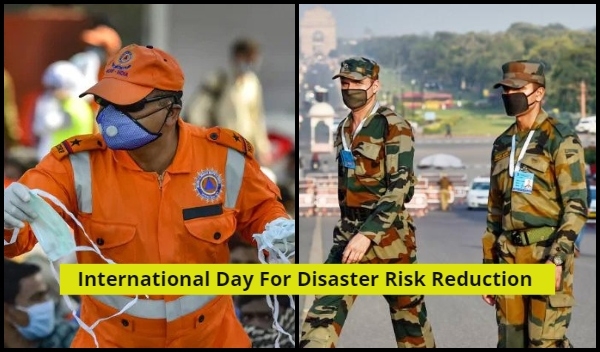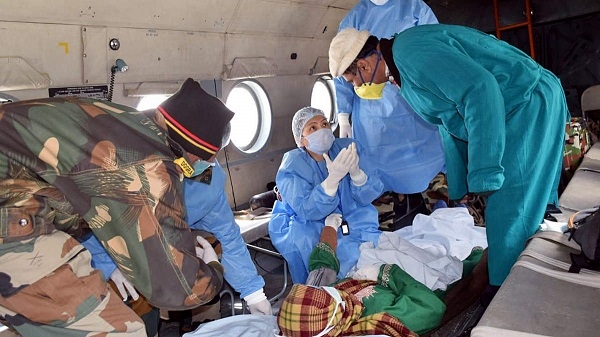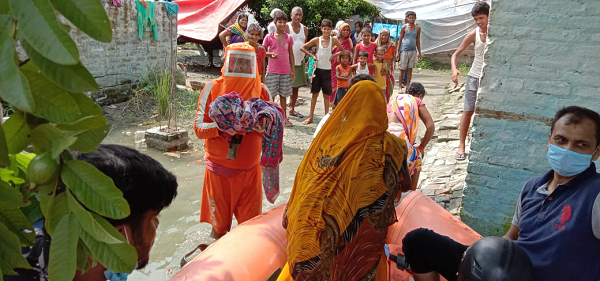#DRRDay: Armed Forces, NDRF shows the way during disasters!
13 Oct 2020 13:12:23
The United Nations in 1989 started to celebrate, October 13, as the International Day for Disaster Risk Reduction, with an aim to promote 'a global culture of risk-awareness and disaster reduction' to reduce the impact of calamities on human beings and other life forms on our planet earth. This year, no would have imagined that '2020' will go down in history as the year of several disasters special thanks to the "coronavirus outbreak". This year, amid the crisis unleashed by the COVID-19 pandemic, the International Day for Disaster Risk Reduction focuses attention on the need to have ‘good governance’ for saving lives and reducing the number of people affected by disasters.

With the outbreak taking place, the strengths and weaknesses of governance of different countries - be it developed, developing, or underdeveloped - are getting revealed. Though human beings do not have control over disasters such as earthquakes, floods, cyclones, volcanic eruptions, tsunamis, and storms, good governance at the local, national and global levels can certainly mitigate the death risk and economic loss due to these events. India is also continuing to tackle the disaster including the corona, floods, and heavy rainfalls. The Indian Armed Forces and National Disaster Response Force and many other disaster management are playing major roles in mitigating the corona crisis and other disasters occurring in India.
Several operations were set in motion in order to reduce the risk of these disasters. The Indian Navy undertook Operation Samudra Setu to bring back the Indian national and it resulted in the safe return of 3,992 of our citizens to their homeland. Indian Naval ships Jalashwa, Airavat, Shardul, and Magar steamed more than 23,000 kilometres during Op Samudra Setu and undertook the evacuation operation in a smooth and coordinated manner. Many medical supplies are being transported to equip the state governments and supporting agencies to combat the contagion effectively and efficiently. The IAF even airlifted critical medical supplies to Male, the Maldives as 'Operation Sanjeevani'.

Meanwhile, the NDRF has proactively controlled the disasters that occurred in many parts of India. As of August 2020, NDRF teams rescued 71 victims & evacuated more than 11,000 persons in Bihar. In addition, teams also distributed 8,550 food packets & 6,250 kg food items to the needy persons during the current monsoon season amid the coronavirus. However, the NDRF teams were also deployed in Maharashtra, Kerala, and a few other states. So far, NDRF rescued 247 persons, evacuated over 14,000 persons & 297 livestock, and provided medical assistance to 40 needy persons across the country during the current monsoon season. Though these were the most affected disasters, NDRF also has also actively participated in rescuing civilians in much another fire breakout, building collapses, etc. The Bhiwandi building collapse is a perfect example of the NDRF playing a major role in controlling the disaster in various parts of India.

These are just a few examples showcasing their spirit and bravery who sacrifice their own lives to overcome the disasters in the country. In the past, too, there are countless acts displayed by them to curb the crisis that happened. On the other hand, all these developments by NDRF or Armed Forces, coming under the government has been a sign of good governance. Though the outbreak is not entirely mitigated in India, these institutions along with other institutions have been constantly assisting to help the countrymen to reduce the risks of the disasters. With them being on their toes continuously, people can be assured that they can rely on someone who can save their lives.
